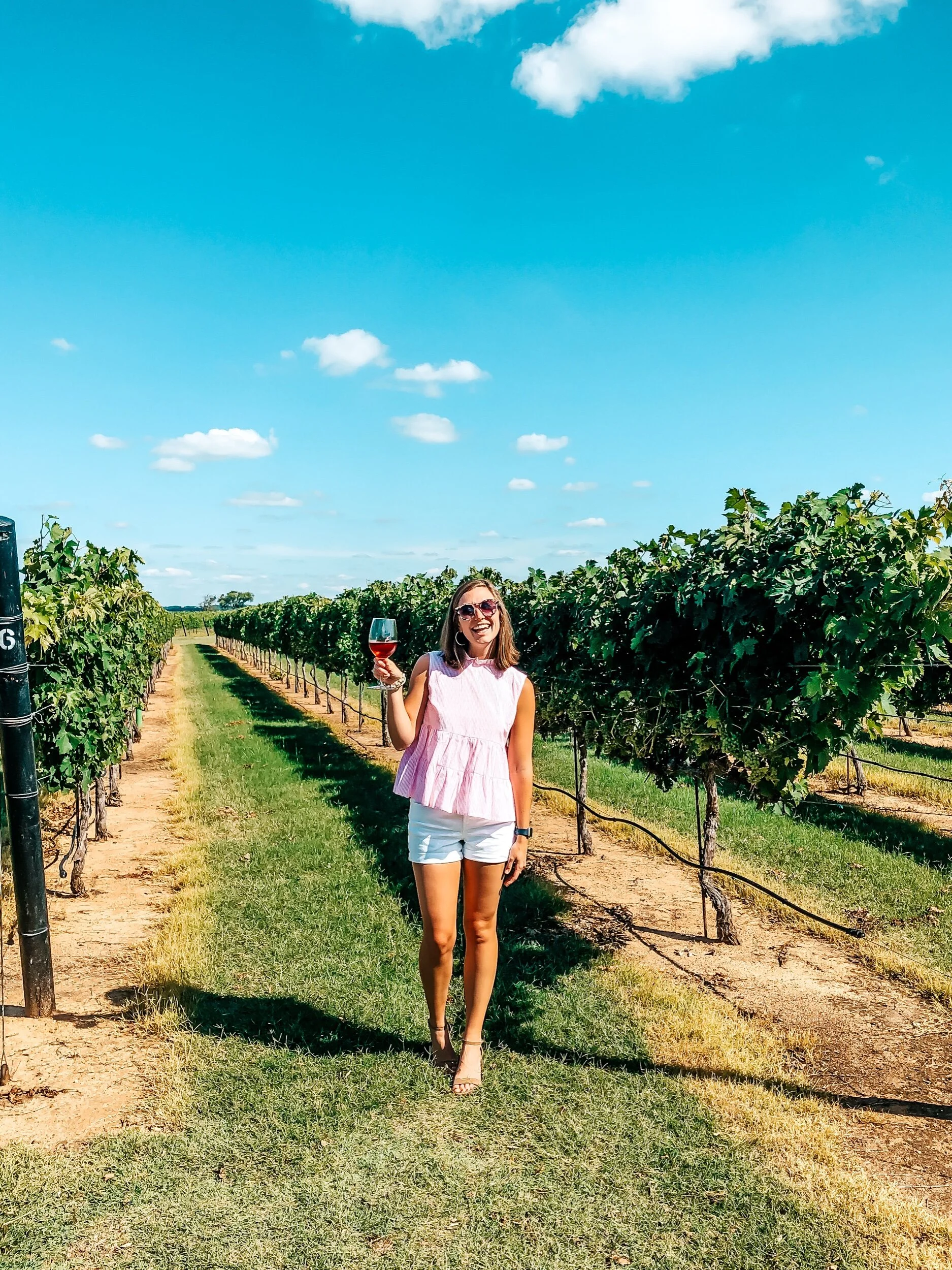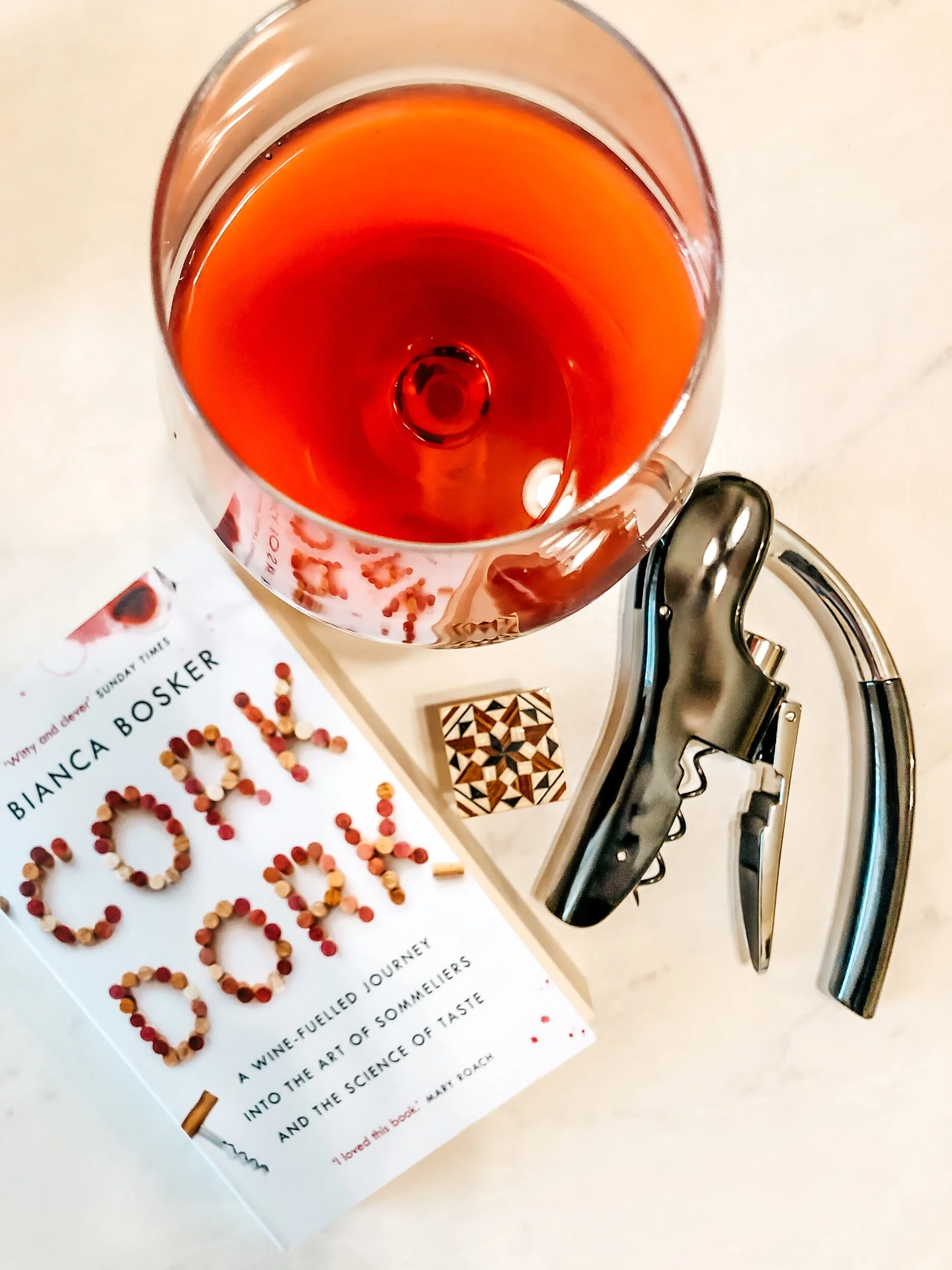The Basics to Tasting Wine Like a Pro
Experiencing my young adulthood in Fredericksburg, Texas, I’ve visited my fair share of wineries. Tasting, tours and Texas wines GALORE! Although I would consider myself very familiar with the Texas Hill Country wine scene, I would admit to lacking in the knowledge of the science behind wine making + tasting. How does one even go about trying to taste wine like a pro? What do you need to know about tasting wine? What are the basics?
I’ve recently found myself in possession of a witty non-fiction book all about tasting wine and chasing the title of sommalier. Bianca Bosker’s, Cork Dork, is a great place to start learning more about wines without feeling like you’re drowning in textbook jargon. She’s hilarious and has a gift for teaching through the written word. Here are some of her tips for tasting wine like the somm you’d want to be…
Look. Observe before tasting. You can discern distinguishing factors about a wine just by looking at the color of the wine and giving it a swirl in your glass. Note how quickly the wine runs down the side of the glass. These liquid trails (“legs” or “tears” in the wine world) can give you insight as to the alcohol levels of the wine. Slow = higher alcohol content. Fast = lower alcohol content.
Smell. This is where you get the classic “berry on the nose” phrasing. Bosker spends the first couple of pages of her book talking about how humans rely too much on the other five senses and forget to fine-tune their sense of smell. First, think big! Think about which fruits / berries you’re smelling. This initial smell has to do with the grape itself. Then think smaller. Yeasty smell? Vanilla? Nutty? These smells come from the fermentation + aging (barrels) process. PRO TIP: To help “expand your pallet” (or the link between your sense of smell and taste buds) this article from Vogue suggests practicing putting names to smells in your everyday life. Smell the fruits in vegetables at the grocery store, try to note and verbalize what exactly you smell walking through your day-to-day. It should eventually help you pick up on the distinct smell of a distinct wine.
Sip + Swallow. Determine the acidity, alcohol and body. ACIDITY: More acidic wines will cause your mouth to drool. TIP: Warmer regions of the world tend to produce more acidic wines. Why do we drool? “We produce saliva, which acts as a buffer to neutralize the harshness of the acid” (Cork Dork, page 47). To remember this trick … think about biting a lemon slice. After biting into the lemon, our mouths almost immediately produce saliva … hence acid! ALCOHOL: Remember the last time you took a tequila shot? You felt it burn all the way down your esophagus. “Table wines generally range from 9 percent to 16 percent alcohol (tequila is around 40 percent by comparison),” (Cork Dork, page 47). Feeling the burning sensation at the back of your tongue will be lower in alcohol verses through your chest. BODY: This refers to the viscosity of the wine (i.e. think about drinking skim milk, whole milk and heavy cream). Hold the wine in your mouth to determine it’s light-, full-, or medium bodied. .
Taste for Tannins. “Tannins are more a texture than a taste…” (Cork Dork, page 48). And tannins in wine come from the grape skins, seeds, and stems. A wine higher in tannins will leave your mouth feeling “dry” after swallowing. FUN FACT: A “dry” wine really just refers to the absence of sweetness. Famous “dry” wines include … tempranillo, cabernet savignon, savignon blanc, pinot gris. For an AWESOME article on understanding wine tannin, check out the blog “Bitter Love” by Wine Folly.
You could go SO MUCH further down the wine tasting rabbit hole, so I think I’ll stick to these basics. Wines are complex and wine tasting can also be very complex (depending on the person, I suppose). I found these tips + tricks incredibly helpful when trying to fully experience my next glass of wine (and many more)!


